Magnetic materials are materials that have magnetic order. Has ferromagnetic or ferromagnetic properties and has practical application value. The fundamental difference between them and other materials is that they are sensitive to external magnetic fields. Magnetic materials are broadly defined to also include antiferromagnetic materials and other weak magnetic materials that have practical application value…
In recent years, the overall demand of the magnetic materials industry has increased steadily. And the rapid development of downstream application fields. Such as optical storage, wind power, new energy vehicles, robotics, industrial automation and wireless charging have brought development opportunities to the magnetic materials industry.
Standards for measuring the performance of magnetic materials
The magnetic properties of magnetic materials are measured as follows:
Stability: The main parameters are the residual magnetization and maximum magnetic energy storage.
The higher the value, the stronger the magnetic field. The magnet can maintain its magnetic properties as possible.
Resistance to demagnetization: The main parameter is the internal coercive force. Maximum operating temperature and Curie temperature. The higher the value, the better the temperature resistance. Magnetic material performance is more stable.
Common applications of magnetic materials for automobiles are commonly seen
Ensure vehicle safety
One of the most impressive uses is the Anti-lock Braking System (ABS). The magnets in this system slow down the vehicle. But still allows the driver to steer. The benefit is that the driver can try to avoid obstacles in the event of an accident. Whether it’s avoiding other cars, pedestrians or trees. ABS systems make accidents less serious. Or work to prevent them completely.
Magnets are also used in locking systems, windshield wipers and seat belt indicators. Thanks to magnets, you can lock all your car doors. To avoid attackers, drive safely in heavy rain. And avoid driving without forgetting to wear a seat belt.
Convenience guaranteed
Magnetic sensors help us monitor the vehicle’s operating condition without having to constantly visit a mechanic. In the past, you wouldn’t have known if a part of your car was misaligned or if the car door wasn’t closing properly.
Nowadays, our vehicles use magnetic sensors. To tell whether our tires are out of sync or not. Or the car door doesn’t close all the way. Magnets are even used in your tire pressure sensors. All these sensors help you maintain your vehicle well.
Achieve efficiency
There are many different uses of permanent magnets in automotive applications. Including efficiency. The auto industry focuses on two types of efficiency: fuel economy and efficiency on the production line. Magnets help both. Magnets play a larger role in the automotive industry’s production chain. Manufacturers can perform vehicle assembly as quickly as possible without sacrificing vehicle quality. Their revenue is higher. Magnets help speed up the process by holding heavy vehicle parts in place. Such as doors.
Classification of magnetic materials and their new applications in today’s electric vehicles
Magnetic materials are divided by function and can be divided into three categories: permanent magnetic materials, soft magnetic materials and functional magnetic materials. Currently, the most common applications in new energy vehicles are Neodymium – Iron – Boron permanent magnets and Ferrite permanent magnets among the permanent magnet materials, and silicon steel, soft magnetic powder core metal, Ferrite soft magnet among the soft magnetic materials.
Permanent magnet material – NdFeB
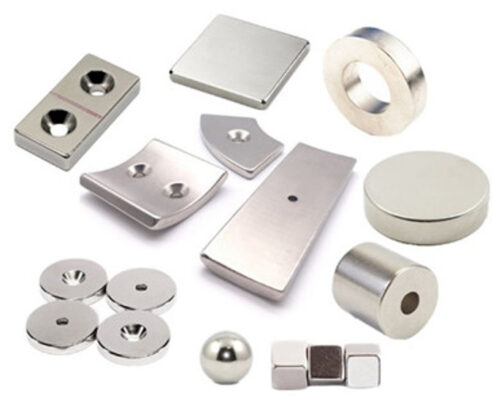
Neodymium – Iron – Boron (Nd-Fe-B) permanent magnet material with main ingredient Nd2Fe14B, has high remanence and high coercive force properties. Each electric car requires about 2.5kg of NdFeB permanent magnet material, which is mainly used for drive motors, ABS, EPS and other parts. This material has excellent performance and can greatly improve the energy efficiency of the motor and reduce energy loss. In addition, car speakers and various sensors are also parts where the Iron-Iron-Boron permanent magnet material is used in today’s electric cars.
Permanent magnet material – Ferrite
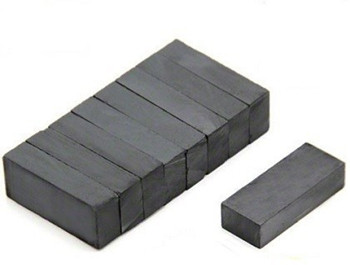
Ferrite permanent magnet material is made from SrO or BaO and Fe2O3. Making raw materials through ceramic technology. Compared with rare earth permanent magnet materials. Although ferrite permanent magnet material has no performance advantage. But they are still used in many fields due to abundant raw materials, low prices, and simple processing processes. And excellent oxidation resistance and large residual magnetization. In electric cars it is mainly used in drive motors, converters, charging piles and other parts.
Material from soft silicon steel
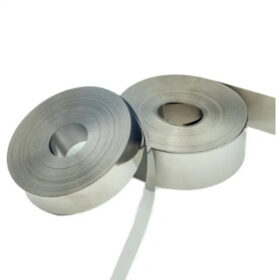
Silicone steel is an iron-silicon alloy. Formed by adding a small amount of silicon (usually less than 4.5%) to pure iron. It has excellent electromagnetic properties such as high magnetic permeability, low hysteresis and low iron loss. In new energy vehicles, silicon steel is one of the important materials of the engine. Can effectively reduce the iron loss and hysteresis loss of the motor. At the same time, improve engine efficiency and performance. In addition to engines, silicon steel can also be used in charging piles, battery management systems, vehicle body structural parts, etc. of new energy vehicles.
Soft magnetic material – metal soft magnetic powder core
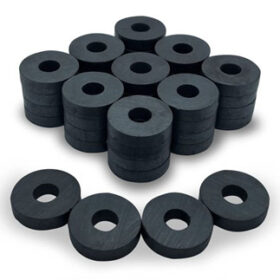
Metal soft magnetic powder core is a soft magnetic material. Pressed with magnetic powder coated with an insulating layer. It combines the advantages of metal soft magnetic materials and soft magnetic ferrite. Because its powder is made from ferromagnetic particles, the saturation magnetic induction intensity is high. At the same time, due to the insulating layer, its resistivity is also high. It is mainly used in three application areas. Charging poles, vehicle-mounted AC/DC chargers and vehicle-mounted DC/DC converters in the field of new energy vehicles. Especially following the 800V high voltage platform trend. The soft metal magnetic powder core will benefit more.
Soft magnetic material – Ferrite
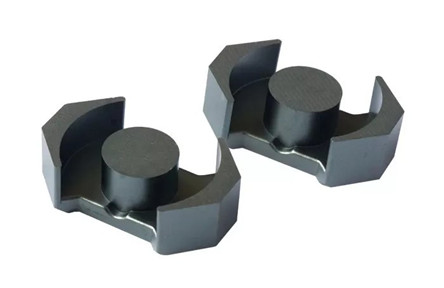
Soft ferrite is a magnetic iron oxide mainly composed of Fe2O3. Manufactured by powder metallurgy. There are several types such as Mn-Zn, Cu-Zn, Ni-Zn. Among them, Ferrite Mn-Zn has the largest output and usage. Is an electronic functional material with excellent high-frequency electrical properties. Relatively low cost. And easily processed into products of different shapes and sizes. Soft ferrite is widely used in OBC equipment of new energy vehicles. EV charging equipment, HEV power system energy conversion, DC-DC converter, battery management system, power distribution unit,…
Prospects for applying magnetic materials in the electric car manufacturing industry
Today, the explosion of new energy vehicles has provided huge development space for magnetic materials.
According to the financial report for the third quarter of 2023 ending on September 30, 2023 issued by VinFast Auto Ltd. (Nasdaq: VFS), a member company of Vingroup, Vietnam’s No. 1 electric vehicle manufacturer, announced recently. VinFast delivered 10,027 electric cars in the third quarter of 2023. An increase of 5% compared to the second quarter of 2023. bringing the total number of vehicles consumed in the first 9 months of 2023 to 21,342 vehicles. The third quarter also initially recorded more positive sales in September in the North American market, especially Canada.
Besides electric cars, in the third quarter of 2023, VinFast recorded impressive sales of electric motorbikes. with 28,220 vehicles delivered, an increase of 177% compared to the second quarter of 2023 and an increase of 113% compared to the third quarter of 2022.
Conclusions
The development of the new energy vehicle industry in the world has entered a period of rapid growth in scale. Regardless of future downstream market share. Or how important is the growth rate of magnetic materials. The development of the new energy vehicle sector is both of great importance and has far-reaching effects.
It is the basic core material of important electronic components. Magnetic materials are widely used in every aspect of new energy vehicle drive motors. Charging terminals, battery management systems, AC/DC chargers, DC/DC converters and other components. Driven by need. And now a series of magnetic material product systems have been formed. Is a segment of new energy vehicle magnetic materials. Competition in the market is also very fierce…


